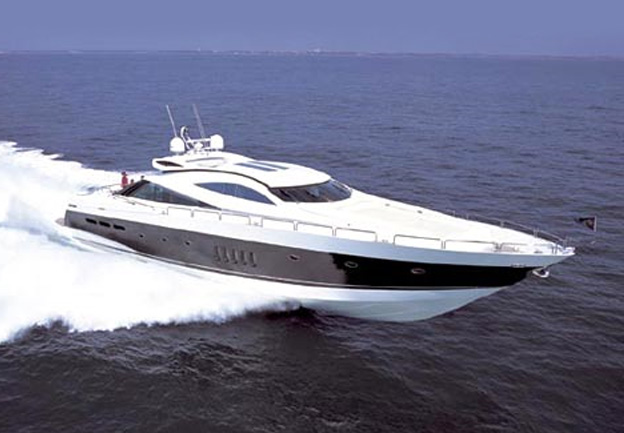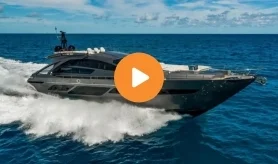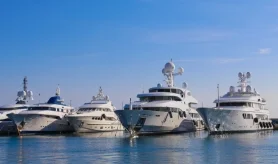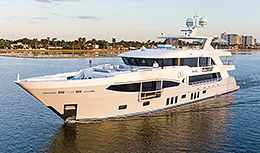- Alaskan Yachts
- Azimut Yachts
- Back Cove Yachts
- Beneteau Yachts
- Benetti Superyachts
- Bertram Yachts
- Boston Whaler
- Broward Yachts
- Buddy Davis Sportfish
- Burger Yachts
- Cabo Yachts
- Catamarans
- Carver Motoryachts
- Center Console
- Chris-Craft Yachts
- Cruisers Yachts
- DeFever Trawlers
- Dufour Sailboats
- Fairline Yachts
- Feadship Yachts
- Ferretti Yachts
- Formula Yachts
- Fountaine Pajot Cats
- Grady-White
- Grand Banks Trawlers
- Hargrave Yachts
- Hatteras Yachts
- Hinckley Picnic Boats
- Horizon Yachts
- Hydra-Sports
- Intrepid Boats
- Jarrett Bay Sportfish
- Jeanneau Yachts
- Kadey-Krogen Trawlers
- Lazzara Yachts
- Lekker Boats
- Luhrs Sportfish
- Marlow Yachts
- Maritimo Yachts
- Marquis Yachts
- Mazu Yachts
- McKinna Motoryachts
- Meridian Yachts
- Midnight Express
- MJM Yachts
- Mochi Craft
- Neptunus Motoryachts
- Nordhavn Trawlers
- Nordic Tugs
- Numarine Yachts
- Ocean Alexander Yachts
- Ocean King
- Offshore Yachts
- Outer Reef
- Oyster Sailing Yachts
- Pacific Mariner Yachts
- Palmer Johnson Yachts
95 Sunseeker Predator
![]()

Source: Dag Pike, Yachting Magazine
With the Predator 95, Sunseeker combines newly refined styling and nail-biting performance.
We cleared the last buoy in the Poole channel and pointed the bow of hull number one to the open sea. In a flash, we were up on plane. The knots poured in on the GPS-30, 40, 45-plus with the throttle wide open-and we powered through the 3-foot waves in the English Channel with pure adrenaline, backed by our test boat’s three MTU V16 diesels.
On one of Sunseeker’s smaller boats, say the Superhawk 34 or the XS2000, I would have expected this sort of speed, but this was the new Predator 95, which displaces more than 140,000 pounds and is the largest of Sunseeker’s popular Predator series. She is a colossus of a yacht, one of the fastest Sunseekers for her size with power that runs deep and promises to keep owners’ emotions running high.
Yet what really makes the Predator 95 stand out is her refined styling, as envisioned by the Sunseeker design team. The exuberant sweeping curves of earlier Sunseeker designs are replaced with a much sharper style. The styling is still distinctive, but the curves are shallower, the lines straighter. The impact is quite dramatic. It’s not often you think of a Sunseeker as having the understated lines of a classic.
Only when standing on the dock, looking up, could I appreciate the yacht’s scale. The design is so well proportioned that everything looks cohesive. I found it hard to get any real impression of her size until I walked toward the bow, which rises at a breathtaking angle, and realized the yacht’s deck was 12 feet or more above the water.
The Predator 95 has a conventional deep-V hull with a deadrise of 20 degrees-very deep for a yacht this size. It helps to smooth the ride at speed, and the bow’s steep angle creates a smooth entry. Everything about this design points to comfortable performance in waves, except for the powerful chines, which present a large, flat area to the seas but are necessary to generate lift. These chines add a harsh note to the ride at faster speeds, which is a surprise on a yacht of this size, but if you remember that you are traveling at 45 knots, the comfort level is quite acceptable.
At the stern, the exhausts are integrated into side ports that extend forward from the swim platform. These exhausts are loud when you’re alongside, but all noise is left behind when the 95 picks up speed and heads for the horizon.
The swim platform is designed to protect the Arneson surface drives below, and to raise and lower for easy tender launch and recovery. The platform also has a turntable for stowing, then launching, a PWC. A transom garage topped by an expandable sunpad can accommodate a main tender up to 14 feet, though the size is affected by the engine configuration.
The open cockpit is designed for entertaining, with settees that accommodate 12 people, a bar counter, a barbecue grill and an awning. From the cockpit, a beautifully curved stainless-steel door opens into the deck lounge. Here, styling is deliberately simple so the eye is drawn to the helm, forward. The settees are cream-colored leather, and the furniture and trim are rich, lacquered cherry-all nicely finished, but not much competition for the four black, adjustable Besenzoni seats that dominate the helm area. They face the highly reflective walnut dash. Engine instrumentation is in the center, and electronics displays are on either side. A large sunroof opens to bring in fresh air.
While the look of the helm is terrific, visibility from it could be better. Wide windscreen pillars are an impediment, particularly at the corners. This, along with the deck lounge’s slim windows, is a result of exterior styling taking precedence over the helmsman’s needs. I mentioned this during my sea trial, but Sunseeker’s marketing manager, Michelle Bailey, said there were no plans to change the design.
Below decks, the Ken Freivokh interior continues the subdued, classic styling theme. An island counter separates the saloon from the galley, which has black granite counter tops that combine with the refrigerator’s brushed stainless steel to create a clean, sophisticated look. The saloon has 8 feet of headroom, a function of the large hull’s depth, but the leather and wood décor softens the ambience. Vertical side windows are also large and bring in lots of light.
An after door leads to the full-beam master stateroom amidships. Here, headroom is more than you will find in the main cabins aboard many go-fast yachts.
Optional layouts are available to accommodate crew. On this prototype, the twin-berth crew cabin had access from an outside door and took up space that would normally be used for the master head, which extends to the full width of the hull when the layout includes an after crew cabin. A dressing room can also be incorporated.
Guests are housed in two twin cabins forward, one with bunks, and in a VIP stateroom in the bow.
The Predator 95’s powerful bow and stern thrusters, linked with a joystick, make light work of maneuvering. Normally, at low speeds, only the two wing engines are used, with the center engine running to supply hydraulic power to the thrusters. With power on all three engines coupled in, the throttle response is excellent. The yacht powers onto plane with no hesitation. Little or no adjustment is required of the Arnesons, except for a slight lifting of the center drive at full speed.
In the engine room, the center engine of the triple 16-cylinder MTU installation is set very low in the hull, almost disappearing between the wing engines. The exhaust pipes leading aft look like spaghetti, and with so much power packed into a tight space, access to some components is limited. The 1,826 hp from each engine is taken through ZF gearboxes to the Arneson surface drives.
With all three engines running at 1500 rpm, this yacht will cruise effortlessly at 30 knots, providing a 600-mile range. Size counts when it comes to coping with sea conditions, and the Predator 95 copes admirably, although the ride gets harsher as speed rises. The pilothouse is set well forward, so you will be sensitive to the sea conditions when at the helm, but most owners won’t mind when they feel the thrill of this 95-footer heeling into a turn in sport boat style.



